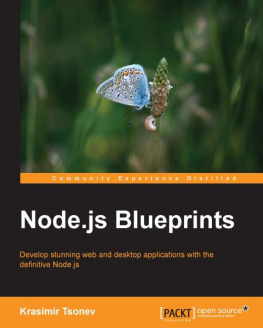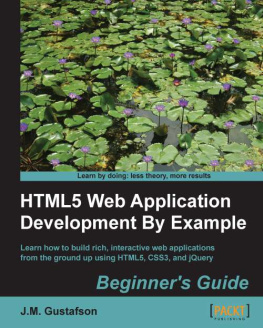1. Welcome to Electron
GitHub Electron (or simply Electron) allows you to build desktop applications using just HTML, CSS, and JavaScript. Sounds like a pretty ambitious statement to make. But it is indeed true, just as Apache Cordova (also known as PhoneGap) enables you to create mobile applications also with just HTML, CSS, JS, and so does Electron for the desktop.
Originally released in July 2013 by Cheng Zhao, an engineer at Github, it was part of their effort to produce a new code editor, Atom. Initially, the project was known as the Atom Shell but was soon rebranded simply as Electron. Although other solutions existed, this project quickly gained traction within the development community. In fact, Adobe AIR, released back in 2008, originally supported building desktop applications with HTML, CSS, and JavaScript, in addition to ActionScript. So the desire to leverage web technologies beyond the browser is certainly not a new one.
In this book, we will take you through the entire Electron ecosystem from its initial setup, through its key features, like creating native menus and windows and more, and how to deploy our app so it can be distributed to our users. Rather bog you down in understanding some abstract sample applications, we are going to be focusing on the core code needing to make Electron work. So, you don't need to know the latest framework to use Electron, but having some basic knowledge with Node.js is useful.
Here is a brief outline of what we are going to be covering:
Setting up Electron
Exploring creating the applications window
Adding native menus
Implementing native dialogs
Learning how to interact with the users system
Creating installable and auto-updating applications
So, if you are ready to start learning about Electron, let's get started.
What Is Electron?
Electron is a blend of two incredibly popular technologies: Node.js (or simply Node) and Chromium. Thus, any web application you have written can run on Electron. Similarly, any Node application you have written can run on Electron. But the power of Electron is that you can use both solutions together.
This book is about how to use these two technologies together to create rich and engaging desktop applications. For example, we have been developing a simple desktop application that will assist developers generate their manifest.json file for their Progressive Web Apps. For those unfamiliar with Progressive Web Apps (PWAs), they are web apps that use modern web capabilities to deliver native app-like experiences within the browser. We could have simply written a Node script that developers could run from the command line. But instead we leverage Electron to create a more compelling desktop application. It is one that allows you to auto-generate the app icons simply by dragging the image on the application, and it will save out the collection for you.
Breaking Electron down into its two components (thankfully the physics naming stopped and we arent referring to these subparts as quarks), they each have specific functions.
The Node component handles things like file system access, compiled module support, and CommonJS Module support. The Chromium component handles things like rendering HTML and CSS, its own JavaScript engine, and the full suite of Web APIs.
Electron is a straightforward runtime. It is not a massive framework/library like Angular or React, but rather a collection of APIs that we can leverage with those or other frameworks. The structure of an Electron application is also open to personal taste. Usually, the UI framework will have more to say about the directory structure than Electrons requirements. However, there are general guidelines that would be wise to follow when developing.
What Is Node?
Node.js was initially released in 2009 as an open source project, enabling developers to create server-side applications using JavaScript. What made this project interesting was that it leveraged Googles newly open sourced V8 engine to act as its JavaScript runtime. Atop of that runtime, the project added APIs for accessing the local file system, creating servers, as well as the ability to load modules.
Node has enjoyed a tremendous surge of popularity from across the development community. As such, there is a huge collection of modules that are available for use within your Electron application.
What Is Chromium?
Chromium is the open source version of Googles Chrome web browser. Although it shares much of the same code base and feature set, there are a few differences (albeit minor) and it is released under a different license. What is included with Electron is technically the Chromium Content Module (CCM). Quite the mouthful, hence why most simply refer it is as Chromium. But what is the Chromium Content Module? It is the core code that makes a web browser a web browser. It includes the Blink rendering engine and its own V8 JavaScript engine. The CCM will handle retrieving and rendering HTML, loading and parsing CSS, and executing JavaScript as well.
The CCM only focuses on the core needs to render a web page. Additional features, like supporting Chrome Extensions, or syncing your Chrome bookmarks, are not supported. Just remember that its core purpose is to render web content.
Who Is Using Electron?
So many open source projects come and go. Is Electron worth investing your time and energy into learn? Yes. Although, Electrons original purpose was to act as the shell for GitHubs Atom editor, companies large and small found it to be a good solution for their development needs. Since it was backed by a recognizable company, the risks were a bit lower than trusting your next big thing on an unproven project. If you go to atom.electron.io you can see a massive collection of applications that have been released with Electron as its core.
Obviously Github is actively supporting it, as it is the foundation of their Atom editor. But who else? The very popular team messaging application Slack is built atop Electron, enabling them to develop a common UI across the operating systems. If Atom is not your code editor of choice, then Microsofts Visual Studio Code might be. This popular editor is also built atop Electron. This is currently our editor of choice at the moment. The team at Microsoft has leveraged common development languages of HTML, CSS, and JavaScript to create a very compelling editor tuned for working with TypeScript and more that works across both macOS and Windows.
A variety of familiar web tools have also been able to transform themselves into the desktop-based applications. If you are familiar with Yeoman, a web project generator, there is now a version with a user interface instead of the standard command-line version you are probably familiar with. The team at Basecamp, a popular project management tool, now supports an out of browser experience. If you have worked with Zeplin.io to inspect your visual designs, then the desktop version was developed with Electron. The Postman API inspection tool is another great example of what is possible as an Electron application.
These are just some of the examples of some first-class web applications that have been able to break free from the browser and create desktop-centric versions of their applications. If you would like to explore some other applications that have been built with Electron, visit https://electron.atom.io/apps/ .


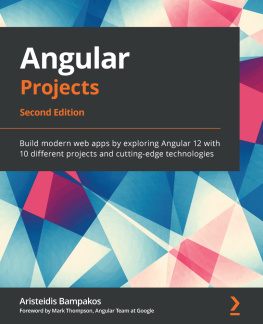
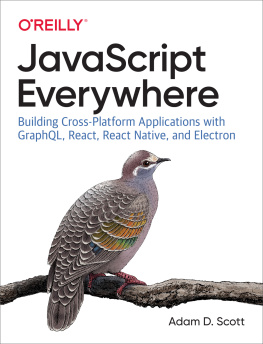
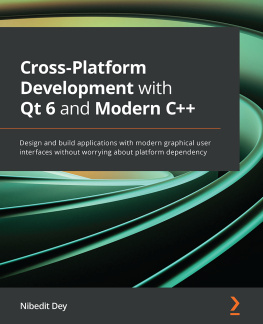


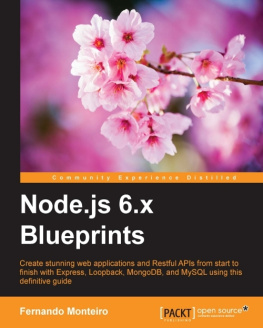
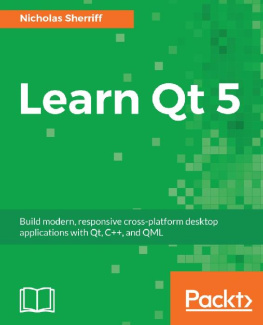
![Dmitry Sheiko [Dmitry Sheiko] - Cross-Platform Desktop Application Development: Electron, Node, NW.js, and React](/uploads/posts/book/119462/thumbs/dmitry-sheiko-dmitry-sheiko-cross-platform.jpg)
